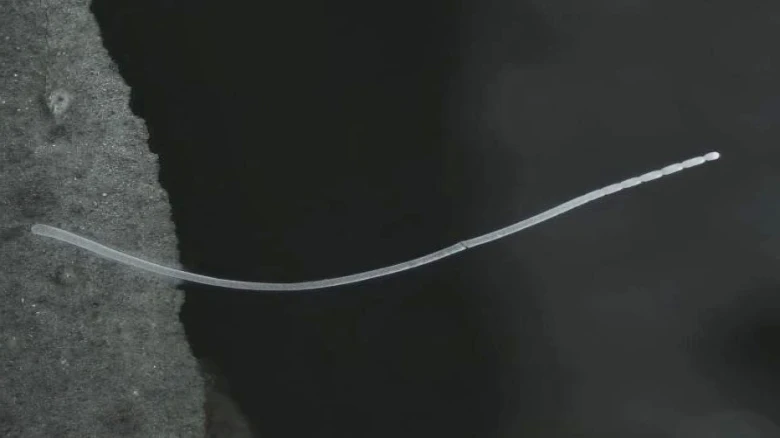Regional

The Thiomargarita magnifica organism is almost 50 times bigger than any other known giant bacteria and is the first enormous bacterium to be visible to the unaided eye.
Digital Desk: In a significant
development, researchers have found the largest bacterium in the Caribbean,
which is a creature that resembles vermicelli. In contrast to most bacteria,
which are minuscule, this particular creature is large enough to be seen with
the unaided eye.
It
is over a centimetre long and around the length of a human eyelash. A typical
bacterial species has a length of 1 to 5 micrometres. This species typically
measures 10,000 micrometres, or four tenths of an inch or one centimetre, in
length.
Single-celled
creatures known as bacteria are found almost everywhere on the globe and are
essential to its ecosystems and the majority of living beings. The first living
things on Earth are believed to have been bacteria, which have remained
structurally simple for billions of years. Only a small percentage of the
bacteria that are abundant in human bodies cause disease.
The
Thiomargarita magnifica organism is almost 50 times bigger than any other known
giant bacteria and is the first enormous bacterium to be visible to the unaided
eye.
The
discovery is described in depth in a report that was published in the journal
Science. Researchers estimate that the bacterium's typical cell length is above
9,000 micrometres.
The
authors discovered highly polyploid cells with compartmentalised DNA and
ribosomes using a variety of imaging techniques. The Candidatus Thiomargarita
magnifica bacterium's single cells, though tubular and thin, stretched more
than a centimetre in length, according to the study.
In
2009, co-author Olivier Gros, a biologist at the University of the French West
Indies and Guiana, discovered the first instance of this bacterium adhering to
submerged mangrove leaves in the Guadeloupe archipelago. But because of its
very large size—these bacteria typically reach a length of a third of an
inch—he didn't immediately realise it was a bacterium (0.9 centimeters).
Genetic testing later revealed that the organism was only one bacterium cell.
Gros
also discovered bacteria in the wetlands, adhering to glass bottles, pebbles,
and oyster shells.
The
cell has a shape that is unusual for bacteria, according to the researchers,
but they have not yet been able to develop it in lab culture. One significant
distinction is that it includes a sizable central compartment, or vacuole,
which enables some cell functions to take place there rather than all across
the cell.
The reason the bacteria is so enormous
is unknown to the researchers, although co-author Volland proposed that it
might be an adaptation to help it avoid being eaten by smaller creatures.
This
discovery is incredible. We should never, ever underestimate microorganisms,
"Petra Levin, a microbiologist at Washington University in St. Louis who
was not involved in the study, told the AP. It raises the question of how
many of these huge bacteria are out there.
mso-fareast-font-family:"Times New Roman";color:black">
Leave A Comment